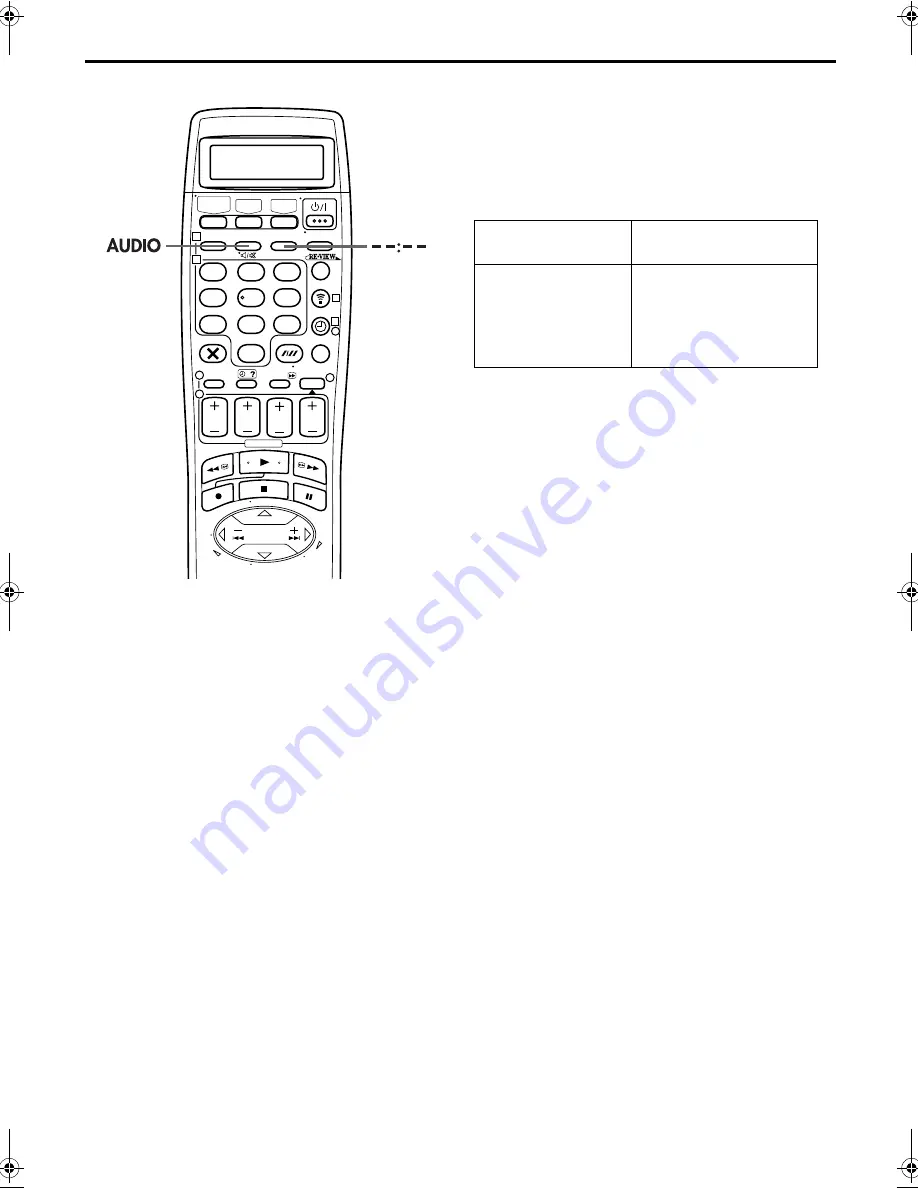
Masterpage:Right-NoTitle0
EN
35
Filename [SR-VS30E_1a-EN.fm]
Page 35
February 1, 2002 3:34 pm
Time Code
During recording, a time code is recorded on the tape. This time
code is used to confirm the position on the tape when playing
back or editing a tape. To perform Random Assemble Editing
(
墌
pg. 58), time code is necessary.
Press – –:– – until the time code on the tape appears on
the front display panel.
●
By pressing the – –:– – button, you can change the display to
show the time code, channel position*, clock time.
* Channel position is not displayed during playback.
●
If “TIME CODE” is set to “ON” (
墌
pg. 73), the time code
always appears on the TV screen while the DV deck is being
selected. (
墌
pg. 7)
NOTES:
The presence of a blank (unrecorded) portion in the middle of a
tape can result in misoperation.
A “blank portion” of a tape is a section where nothing is
recorded on the tape. If you start recording in a blank portion of
a tape, the time codes will start from “0:00:00:00” again. If
identical time codes are recorded in two different places on a
tape, Random Assemble Editing and other similar functions
might not operate properly.
In the following cases, you should play back the tape and
confirm where a scene ends, and then begin recording from
there:
●
When starting recording in the middle of a tape on which a
recording has already been made.
●
When you finish recording on a tape, then played back that
recording in order to check it, and now wish to continue
recording.
●
When you lost power or the batteries died while you were
recording with a camcorder.
Receiving Stereo and Bilingual
Programmes
Your recorder is equipped with a Sound-Multiplex decoder (A2)
and a Digital stereo sound decoder (NICAM) making reception
of stereo and bilingual broadcasts possible.
When the channel is changed, the type of broadcast being
received will be displayed on the TV screen for a few seconds.
●
To listen to a stereo programme, press
AUDIO
until
“L
j h
R” appears on the TV screen.
●
To listen to a bilingual programme, press
AUDIO
until “L
j
”
or “
h
R” appears on the TV screen.
●
To listen to the standard (Regular Monaural) audio while
receiving a NICAM BIL broadcast, set “AUDIO REC” to
“MONO” (
墌
pg. 73).
NOTE:
“O.S.D.” must be set to “ON” or the on-screen displays will not
appear (
墌
pg. 69).
To Record Stereo and Bilingual Programmes (A2)
Stereo programmes are automatically recorded in stereo on the
audio track.
●
Bilingual programmes are automatically recorded in bilingual
on the audio track.
To Record NICAM Bilingual Programmes
See “AUDIO REC” on page 73.
NOTE:
Before playing back a bilingual programme, refer to “Soundtrack
Selection” on page 33.
1
2
3
4
5
6
7
8
9
1
2
1
2
3
0
3
4
4
Type of Broadcast Being
Received
On-screen Display
A2 Stereo
A2 Bilingual
Regular Monaural
NICAM Stereo
NICAM Bilingual
NICAM Monaural
ST
BIL.
(none)
ST NICAM
BIL. NICAM
NICAM
SR-VS30E_1-EN.book Page 35 Friday, February 1, 2002 3:35 PM
Содержание SR-VS30E
Страница 90: ...90EN MEMO ...
Страница 91: ...EN 91 ...
















































